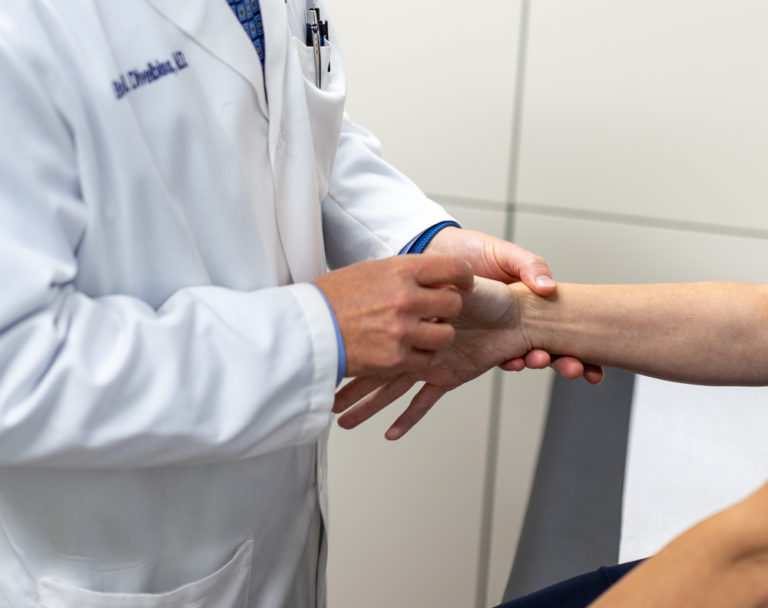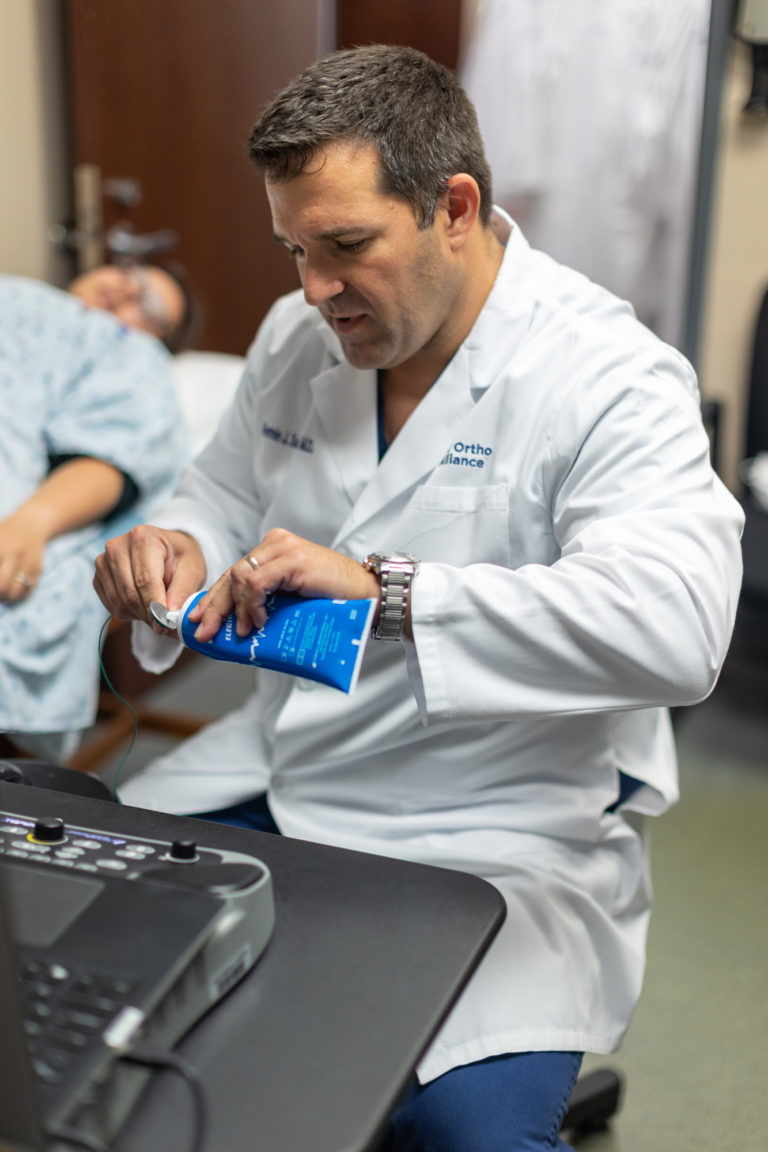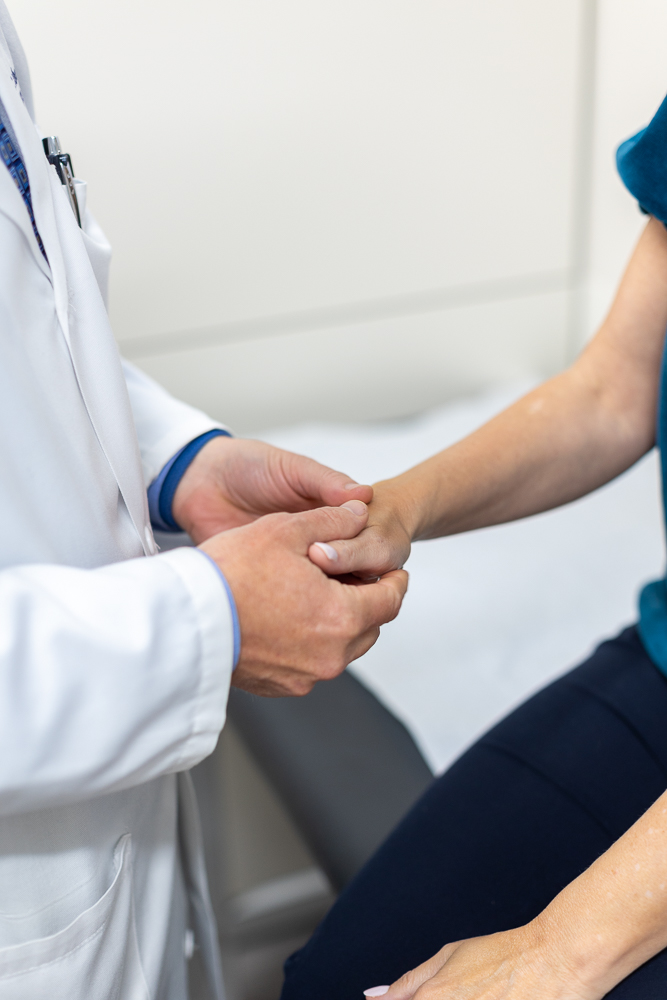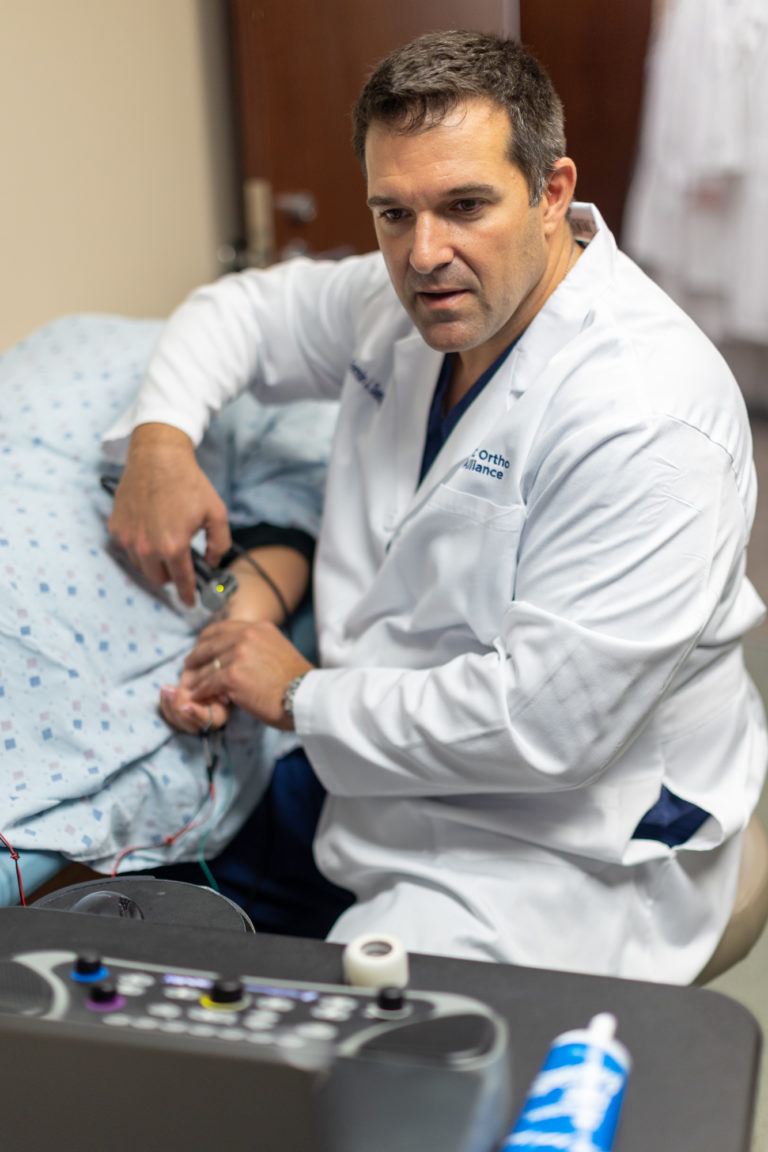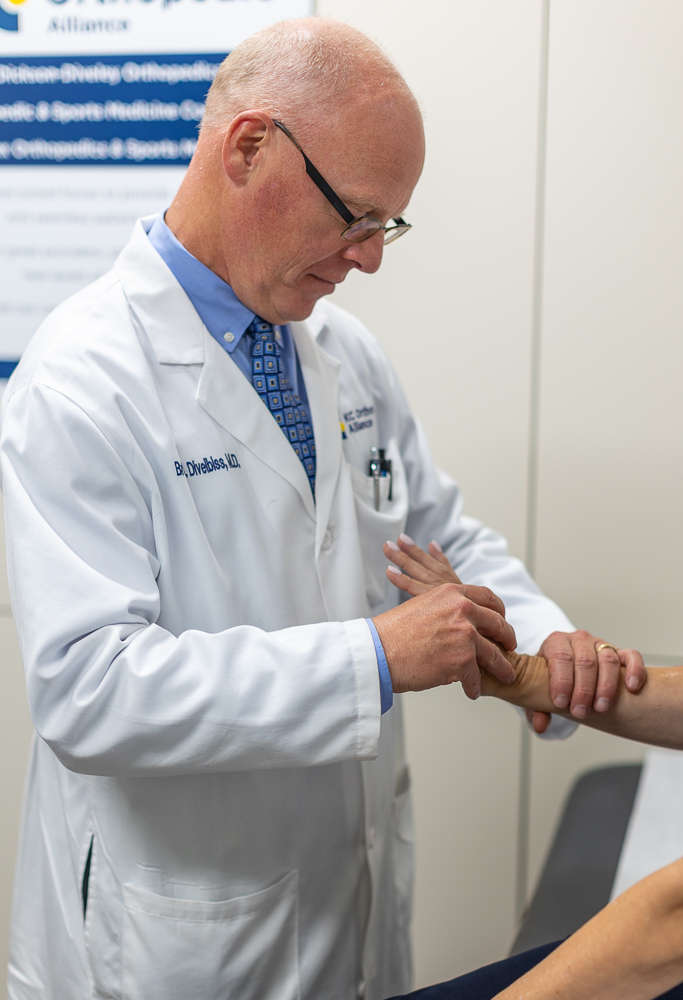
What is Carpal Tunnel Release?
Carpal tunnel release is a surgery performed to treat carpal tunnel syndrome.
In carpal tunnel syndrome, the median nerve becomes compressed or squeezed as it passes through the carpal tunnel en route to the hand. The carpal tunnel is a space formed by bones and ligaments in the wrist. When there is not enough room in the carpal tunnel for the nerve to travel without being compressed, the nerve will become damaged and carpal tunnel syndrome will develop.
A common misconception is carpal tunnel syndrome occurs only in people who do a lot of repetitive activities with their hands, like typing. While repetitive activities can contribute, carpal tunnel syndrome is a very common issue and can be the result of arthritis, wrist fractures, genetics, obesity, diabetes, and even your gender.
When a carpal tunnel release surgery is performed, the ligament forming the roof of the carpal tunnel is cut to relieve pressure on the median nerve. Once the pressure on the nerve is removed, the nerve can begin to heal, and the painful numbness & tingling symptoms of carpal tunnel syndrome can begin to improve & hopefully resolve altogether.
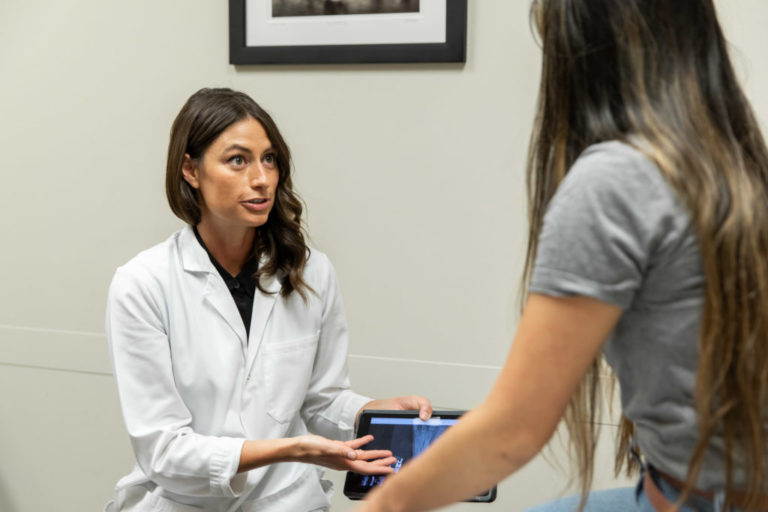
Who May Need a Carpal Tunnel Release?
Common Symptoms of Carpal Tunnel Syndrome:
- Hand numbness & tingling
- Pain in the fingers, palm, wrist
- Loss of dexterity in the hand (e.g. difficulty buttoning shirts, picking up small objects, etc.)
- Weakness in grip
- More
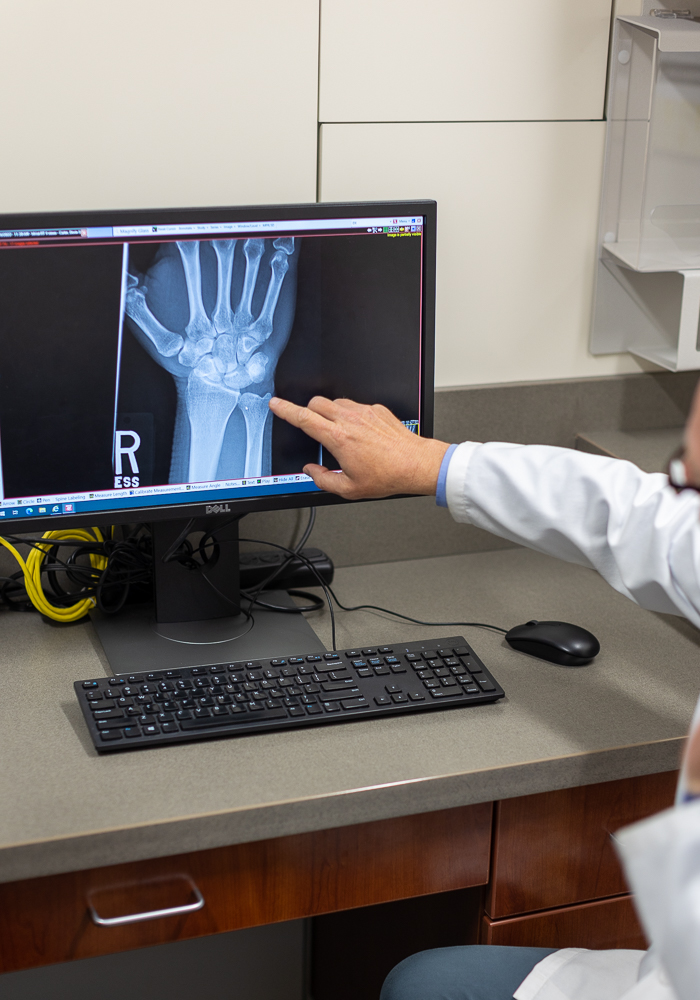
Assessing for Carpal Tunnel Syndrome
At KCOA, you will meet with skilled orthopedic specialists to ask you questions about your symptoms & to perform a thorough physical exam.
Common questions you may be asked at your initial appointment include:
- What symptoms do you have—Pain? Numbness? Tingling?
- Where do your symptoms occur—Certain fingers? The whole hand? Any spread of symptoms into the forearm or arm?
- Are your symptoms constant or do they come and go with certain activities or times of day?
- Do your symptoms limit your ability to function?—With daily activities? At work? With certain hobbies?
- What are your goals for treatment?
Workup
In addition to a detailed history & examination, advanced testing is often required for a complete diagnosis. This may include:
Electrodiagnostic Testing: Electromyogram (EMG) & Nerve Conduction Studies
Electrodiagnostic testing measures the function of a person’s nerve. It identifies the presence of nerve damage, the location of nerve damage, and the severity of nerve damage. Specifically in carpal tunnel syndrome, electrodiagnostic testing helps verify the presence & severity of carpal tunnel syndrome, evaluates for other issues in the hand that resemble carpal tunnel syndrome, and can identify if other nerve injuries are present that may influence the course of carpal tunnel syndrome. The test is performed in clinic by our board-certified physiatrists. The EMG (electromyogram) portion involves a small pin being inserted into a muscle to measure how the muscle is receiving nerve messages—it looks similar to acupuncture. The NCS (nerve conduction study) portion involves a light pulse being sent across the nerve to measure the health of the nerve—it feels like a TENS unit.
Diagnostic Ultrasound
Diagnostic Ultrasound evaluates the structure of a person’s nerve. Specifically in carpal tunnel syndrome, it can confirm the presence of carpal tunnel syndrome, evaluate for nearby masses or structural abnormalities that may be contributing to the carpal tunnel syndrome, and identify anatomical variations that may affect management. The test is performed in clinic by our board-certified physiatrists with training in diagnostic ultrasound. The ultrasound is a pain free test performed on you while you are laying down with your arm & wrist extended.
Carpal Tunnel Release Procedures
Open carpal tunnel release
Open carpal tunnel release is performed at a hospital or a surgericenter. It involves making a small incision large enough to allow the surgeon to see the carpal tunnel. Once completed, your surgeon will stitch up the area and place your hand and wrist in a splint or securing bandage.
Endoscopic release
Endoscopic release surgery is performed at a hospital or a surgericenter. It involves making one or two small incisions. A thin, flexible tube that contains a camera is put into the wrist to help guide the surgeon to cut the ligament. Once completed, your surgeon will stitch up the area and place your hand in a securing bandage. The stitches are often buried, and absorb with time, thus may not warrant a separate appointment for removal.
Carpal tunnel release with ultrasound guidance
Carpal tunnel release with ultrasound guidance is performed in the clinic under sterile conditions. It involves making a small incision at the wrist through which a device is guided into the carpal tunnel to cut the ligament under direct ultrasound visualization. Once completed, the incision is glued shut and bandaged, stitches are generally not required.
Why KCOA for Carpal Tunnel Syndrome?
KCOA is the most comprehensive hand center in the Kansas City area. In addition to having experts in all the techniques a carpal tunnel release surgery can be performed, we are experts in the non-operative conservative management options for carpal tunnel syndrome. Non-surgical treatments for carpal tunnel syndrome may include:
Hand Therapy
A trained therapist will focus on the issue that’s causing the pain or symptoms as well as the deficits that are present as a result of the injury. Stretches, strengthening exercises, manual soft tissue work, and other modalities may help you recover.
Bracing
your physician may prescribe a brace to help maintain your wrist in neutral position to reduce irritation. With carpal tunnel syndrome, using a brace at night can improve night time worsening of symptoms.
Injections
Injections can reduce inflammation and improve a person’s symptoms for a period of time. Steroid injections, also referred to as cortisone injections, are the most common type of injection performed. Other types of injections can be helpful as well, such as dextrose injections and platelet rich plasma (PRP) injections.
F.A.Q.
Frequently Asked Questions
Kansas City Orthopedic Alliance is here to help.
Our care is personal. Our team is knowledgeable. And we’re more available than ever.
With access to board-certified specialists across Kansas City, we have the tools to meet almost every musculoskeletal condition.
Our Locations
Overland Park, Kansas
10777 Nall Ave Suite 300 Overland Park, KS 66211Leawood, Kansas
3651 College Blvd. Leawood, KS 66211Kansas City, Missouri
Saint Luke's Medical Plaza #1 4320 Wornall Rd., Ste. 610 Kansas City, MO 64111Belton, Missouri
Belton Regional Campus 17067 S Outer Rd #301 Belton, MO 64012Blue Springs, Missouri
St. Mary’s Medical Center, Main Entrance 203 NW R.D. Mize Road, Suite 200 Blue Springs, MO 64014Shawnee Mission, Kansas
7450 Kessler St ste. 140 Merriam, KS 66204Prairie Star (Lenexa, Kansas)
Prairie Star 23401 Prairie Star PkwyBldg. B, Ste. 220 Lenexa, KS 66227

